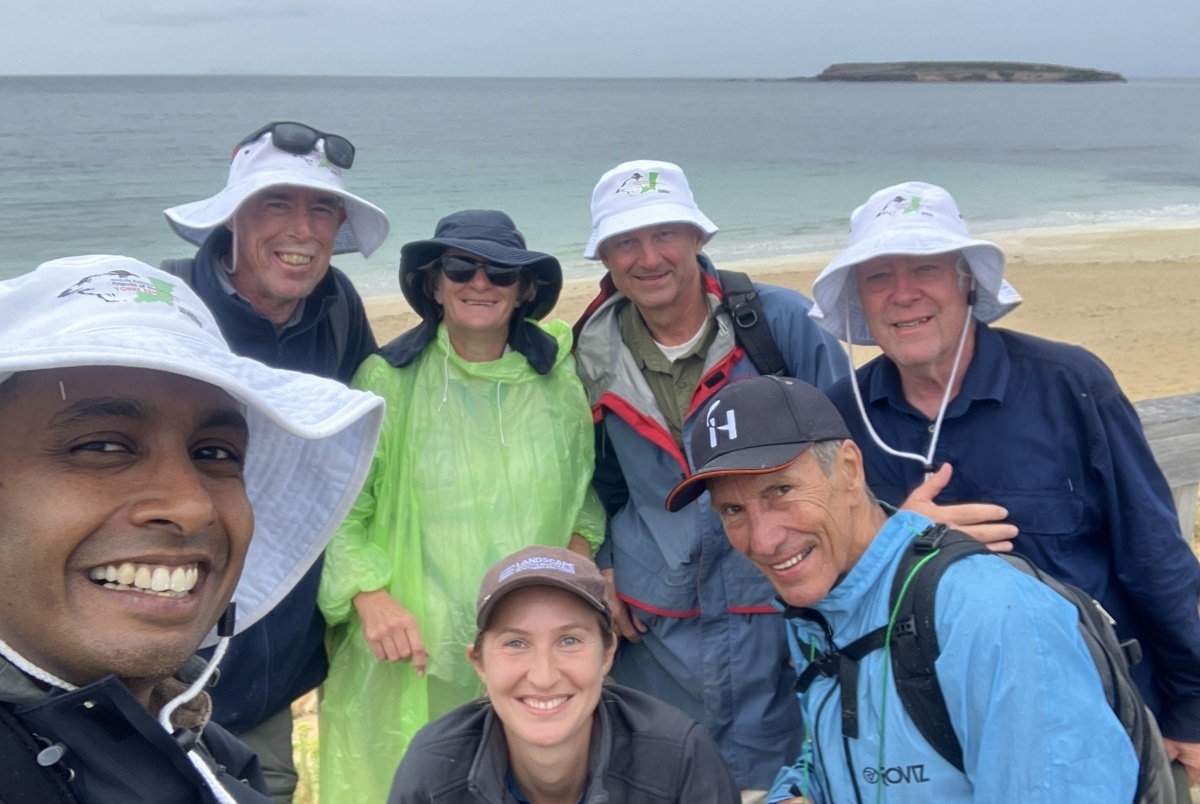Posted on: 25th July 2024
Monitoring led by BirdLife Australia on behalf of the Northern and Yorke Landscape Board revealed that the breeding success of these vulnerable beach-nesting birds increased significantly within Marna Banggara’s 170,000 hectare predator control zone between 2017-2018 and 2023-2024.
Marna Banggara is an ambitious rewilding project led by the Northern and Yorke Landscape Board that aims to reintroduce locally-extinct species and restore Yorke Peninsula’s landscape. It is jointly funded through the Board, the Australian Government, the SA Department for Environment and Water, WWF-Australia and Foundation for National Parks & Wildlife.
The cumulative hooded plover monitoring results across 7 seasons showed that breeding sites within the zone produced 0.79 fledglings (chicks that reached flying stage) per hooded plover pair, compared with 0.56 fledglings per pair outside of the zone. In fact, both results are above the target figure of between 0.4 and 0.5 fledglings per pair which is expected of hooded plovers breeding in remote locations where anthropogenic threats such as off-leash dogs and human disturbance is absent.
“This trend shows that the increased feral predator control activities taking place ‘inside’ the predator control fence have benefitted the hooded plover population,” said Northern and Yorke Landscape Board’s Marna Banggara ecologist Claire Hartvigsen-Power.
The research also compared fledgling survival within the zone before and after the completion of the 25km predator control fence, which crosses the ‘foot’ of the peninsula and provides another layer of predator control.
Comparing 4 seasons prior to fence completion in July 2021 and 3 seasons post-completion, the data revealed a clear increase in breeding success after the fence was installed, according to Kasun Ekanayake, BirdLife Australia’s Beach-nesting Bird project coordinator.
“The cumulative breeding success post-installation of the fence was significantly higher, around 0.95 fledglings per pair compared with breeding success pre-installation which was 0.42 fledglings per pair),” he said.
As part of Marna Banggara, nearly 200 brush-tailed bettongs, known as yalgiri to Narungga people, have been reintroduced to southern Yorke Peninsula and the status of species like hooded plovers, heath goannas and malleefowl are being monitored.
Hooded plover breeding success across Yorke Peninsula has trended upwards since 2015-2016 when 2 chicks reached fledgling stage from 2 breeding pairs. In 2023-2024, 54 pairs of hooded plover parents were monitored by volunteers on Yorke Peninsula and 43 of their chicks survived the busy holiday season and other threats. In the previous season, 34 pairs were monitored and 24 chicks survived.

Volunteer citizen scientists play a crucial part in protecting hooded plovers, which are vulnerable due to eggs laid in simple nest-scrapes on the beach and chicks that are flightless for five weeks. The volunteers, who are part of the Friends of Hooded Plover Yorke Peninsula group, help educate beach goers about the threat of off-leash dogs and vehicles crushing eggs above the high tide mark. They also install fences and signs that alert beach goers. During the past 6 years, volunteers have covered areas such as Moonta Bay, Balgowan, Port Victoria, Wauraltee, Bluff Beach, Point Souttar, The Pines, Port Vincent, Sheoak Flat and Port Julia.
The group welcomes new members to support the conservation of hooded plovers. Getting involved is simple and can be a one-off activity like joining the Biennial Count (a population count every two years), which is happening again this year on 16 and 17 November. If you live on Yorke Peninsula or holiday there regularly, it can be as easy as counting the birds on your daily walk along the beach.
Contact the Northern and Yorke Landscape Board on 8841 3444 or via the Board's website to register your interest.
Photograph of a hooded plover parent with its chick at the top of this story was captured by David Newell.
Archive
2024
July
June
2023
- Fantastic (mallee)fowl facts
- Malleefowl surprise for volunteers as count remains stable on previous year
- The bell tolls for native species with domestic cat spotted roaming
- Baby boom update from Marna Banggara
December
November
September
July
June
May
January
2022
- Rewilding reptiles: Using lizards to restore landscapes in South Australia
- Baby boom for first bettongs on Yorke Peninsula in over 100 years
December
November
July
May
March
2021
- Celebrating the return of brush-tailed bettongs to Yorke Peninsula
- Brush-tailed bettongs back on mainland South Australia after disappearing more than 100 years ago
October
September
August
July
April
2020
- Brush-tailed Bettongs: The habitat they like to call home
- The elusive Western Whipbird on song in Warrenben